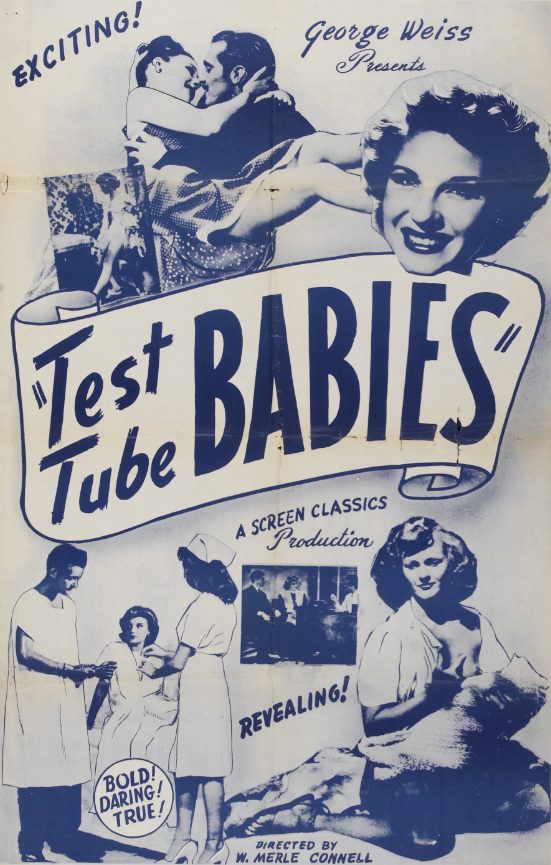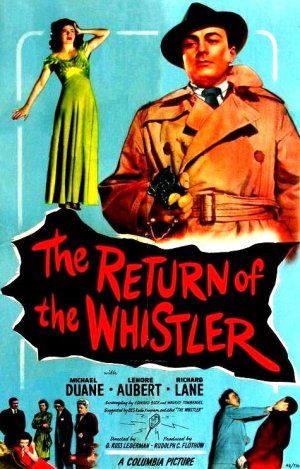 He wasn’t a man … he was a way of life.
He wasn’t a man … he was a way of life.
The last line of Edgar G. Ulmer’s Ruthless could have been the capper to an epic tale of striving and loss, but after almost one hour and 45 minutes of not-quite-there dramaturgy and characters that seem more like symbols and types than actual people, that last line rings utterly false.
Ulmer is a good director — he’s been called “the poet of Poverty Row” — but nothing he’s made since Detour (1945) has really struck a chord with me.
Detour is not only one of my favorite film noirs, but one of my favorite films, period, and would easily make the list of my top 10 favorite films of all time.
I liked both The Strange Woman (1946) and Carnegie Hall (1947), but neither ascended to the pulpy, brilliant heights of Detour. It’s been more than 15 years since I saw Ulmer’s The Black Cat (1934), but I remember loving it. The wonderful lead performances by Bela Lugosi and Boris Karloff didn’t hurt, but Ulmer’s direction and surreal set pieces took it to a level that most Universal horror films can’t match. His dreamy horror film Bluebeard (1944), which starred John Carradine, is good too.
My point is that Ulmer is a director capable of great stuff, but Ruthless doesn’t show him in top form. Based on Dayton Stoddart’s 1945 novel Prelude to Night, the film is a series of flashbacks that tell of the merciless rise to power of Horace Woodruff Vendig (Zachary Scott).
The film begins with a glamorous party at Horace Vendig’s palatial seaside manor. He has thrown the party to coincide with his announcement that he is handing over all his wealth and possessions to world peace organizations. Among the guests are Vic Lambdin (Louis Hayward) and his date, Mallory Flagg (Diana Lynn). Vic is Horace’s oldest friend, and his reappearance stirs up old wounds and painful memories.
Horace was an unwanted child. His parents (played by Raymond Burr and Joyce Arling) split up, and both of them were more interested in their own love affairs than in their son. But after Horace saves a girl named Martha Burnside (played as a child by Ann Carter), her parents accepted him as their own child, which allowed him to attend Harvard and make his mark in society. Incidentally, young Horace is played by Robert J. Anderson, who also played James Stewart as a young man in It’s a Wonderful Life (1946).
In the series of flashbacks that follow Horace’s childhood, Zachary Scott and Louis Hayward play the younger versions of themselves and Diana Lynn, who plays Mallory, also plays the grown-up Martha Burnside. I’m not sure what the point of this dual role was. The two characters aren’t related, and if Mallory’s resemblance to Martha is meant to remind Horace of everything he has lost then not enough comes of it.
Horace’s ruthless business machinations and his seduction of women are inextricable. When he’s used a woman for all the social advancement she’s worth, he throws her aside for his next conquest.
The film’s theme of sex & business is made most literal in the sequence in which Horace takes over the entire financial empire of Buck Mansfield (Sydney Greenstreet) by seducing his wife Christa (Lucille Bremer). With her comes everything. She tells Buck that she couldn’t transfer her affection to Horace without also transferring her loyalty, but the idea that she holds the key to all of Buck’s assets is still pretty far-fetched. She eventually wises up, as all of Horace’s women do, and she screams at him, “From the first moment you weren’t kissing me, you were kissing forty-eight percent!”
On the IMDb page for Ruthless, there are many user reviews that proclaim the film a classic, and nearly the equal of Citizen Kane (1941). I don’t know what movie these people saw, and can only ascribe their enthusiasm for Ruthless to the deep desire that lies in the heart of every cinéaste to champion an unfairly neglected film.
Besides the style of the film, which is passable but nowhere near the technical brilliance of a film like Kane, the lead performance of Zachary Scott is too one-note to ever make the viewer truly hate or love Horace Vendig. (It’s perhaps not a coincidence that the scenes of Horace’s childhood, in which another actor plays him, are the most moving and compelling of the film.)
Scott crafts a character who is by no means likeable, but there’s also nothing particularly interesting or profound about his plutomania, and I could never dredge up the depth of feelings that his friend Vic experiences, making the “tragic” events of the film’s climax more laughable than sad.

















